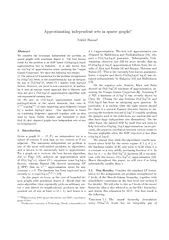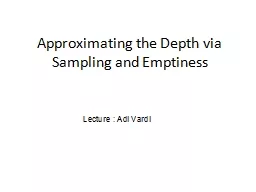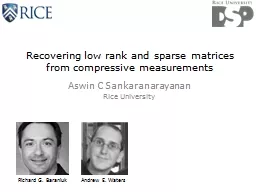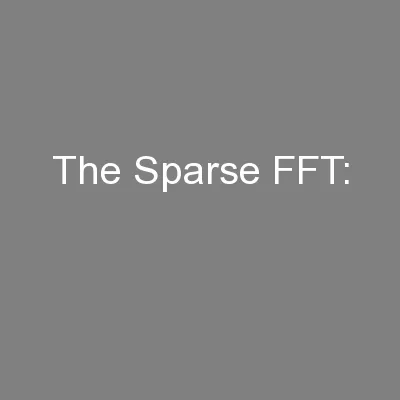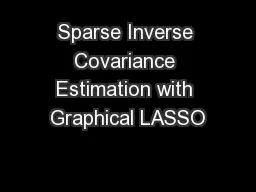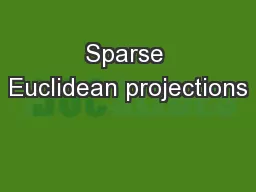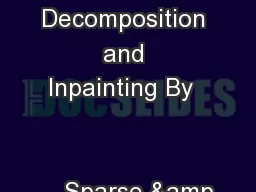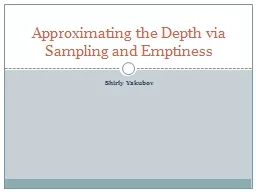PDF-Approximating independent sets in sparse graphs Nikhil
Author : karlyn-bohler | Published Date : 2015-04-30
The best known result for the problem is an SDP based log log d log approximation due to Halperin It is also known that no d log approximation exists assuming the
Presentation Embed Code
Download Presentation
Download Presentation The PPT/PDF document "Approximating independent sets in sparse..." is the property of its rightful owner. Permission is granted to download and print the materials on this website for personal, non-commercial use only, and to display it on your personal computer provided you do not modify the materials and that you retain all copyright notices contained in the materials. By downloading content from our website, you accept the terms of this agreement.
Approximating independent sets in sparse graphs Nikhil: Transcript
Download Rules Of Document
"Approximating independent sets in sparse graphs Nikhil"The content belongs to its owner. You may download and print it for personal use, without modification, and keep all copyright notices. By downloading, you agree to these terms.
Related Documents

